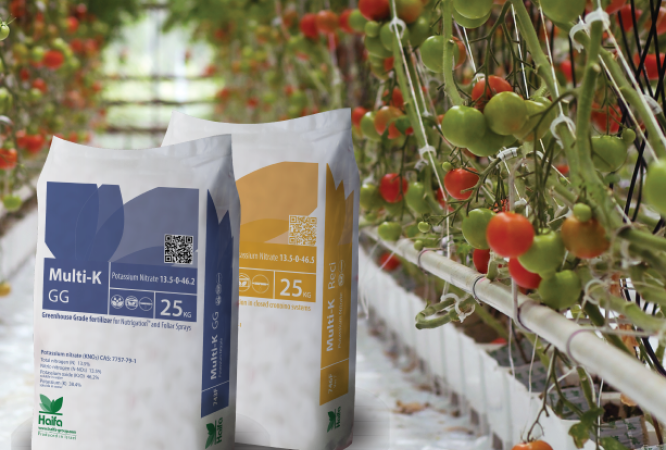Fertilizers containing potassium (K) are often used to compensate for plant deficits. Farmers must supplement this crucial plant nutrient when soils are unable to give the amount of K required by crops. Potash is so called the number of K-containing agricultural fertilizers. The most common source, potassium chloride (KCl), is also known as muriate of potash, or MOP (muriate is the old name for any chloride-containing salt).
Chloride, like potassium, helps with water regulation in plant cells leading to productive cells. It is one of the 17 basic elements that all plants require in order to grow, produce fruit, and reproduce.
The term 'essential' refers to chloride's role in photosynthesis, specifically photosystem II, where water molecules are divided to provide extra electrons to the system.
Because of its low cost and higher K content than most other sources, potassium chloride is the most extensively used K fertilizer. More than 90% of global potash production is used for plant nutrition.
Farmers apply KCL to the soil's surface before tillage and planting.
But is it really doing good to your crops?
Ion toxicity and ion imbalance Specific ions affect plant development when a relatively high concentration exceeds plant demand. Usually, the dominant ions that cause problems are Cl- and Na+ . Despite their essentiality - chloride and sodium for most plants these elements are more damaging than beneficial. When these elements are taken up by the plants at high concentration, they accumulate in the tissue to the extent that they first cause chlorosis (yellowing and curl), and if the situation continues the tissue reaches necrosis. Necrosis is an irreversible situation - the tissue looses its vitality, turns brown, leaves curl and eventually the plant defoliates. It has been proved in many fruit trees that growth inhibition and foliage injury occur even at low NaCl salinization, which supports the notion that water deficit is not the constraint . Ion toxicity mechanisms are believed to cause enzyme reactions, such as inhibition and inadequate compartmentation between cytoplasm and vacuoles. Ion imbalance is caused by interactions between the uptake of different ions, where one ion affects the uptake, transport or utilization of another. The imbalance can be caused by antagonism and competition, or by chemical reactions that restrict the uptake of ions. Sodium salinization is mainly related to low Ca2+ in the substrate, causing an imbalance in the tissue ratio for Na/Ca and displacement of Ca2+ from the plasma membrane root hairs . In soil with high phosphorus availability, NaCl salinity may enhance phosphorus uptake and depress plant growth due to phosphorus toxicity. Chloride salinization may inhibit NO3- uptake. Calcium disorders High concentrations of Na+ in the substrate inhibit uptake and transport of Ca2+ and, therefore, may induce calcium deficiency in plants growing in low Ca2+ concentration or high Na+/Ca+2 ratios.
So what can you do?
Haifa Group offers a unique product - Multi-K™ Reci.
Multi-K™ Reci is an innovative potassium nitrate formula with near-zero sodium. Ensuring pure, healthy nutrition, Multi-K™ Reci cuts the accumulation of sodium in the irrigation water and the growing medium.
Multi-K™ Reci optimizes water use, and is highly recommended for recirculated irrigation systems.
Sodium is one of the main non-beneficial elements for plants. As it is not uptaken, it accumulates in the irrigation solution and in the growth medium, raise the salinity and might harm plants.
When using fertilizers that contain sodium, growers have to wash the growth substrate in soilless systems, and to drain frequently recirculated systems in oreder to avoid sodium build up.
This requires extra labor, and also has a negative environmental impact.
Multi-K™ Reci cuts sodium accumulation, thus ensuring pure nutrition, optimizing water use,
and saving on labor.
♦ Avoid salinity build-up
♦ Save labor
♦ Minimize pollution
For more information regarding Multi-K™ Reci , Click here.




